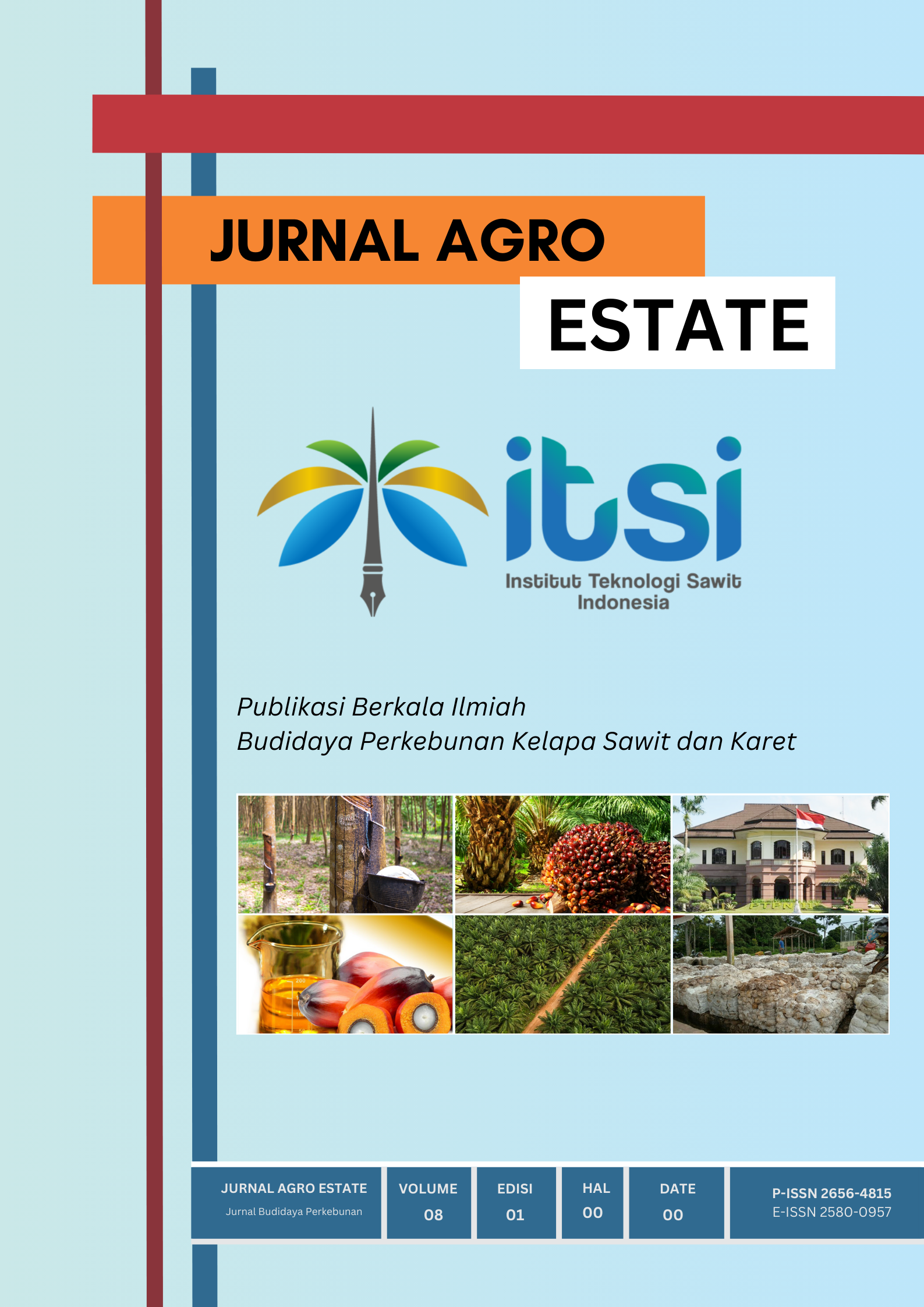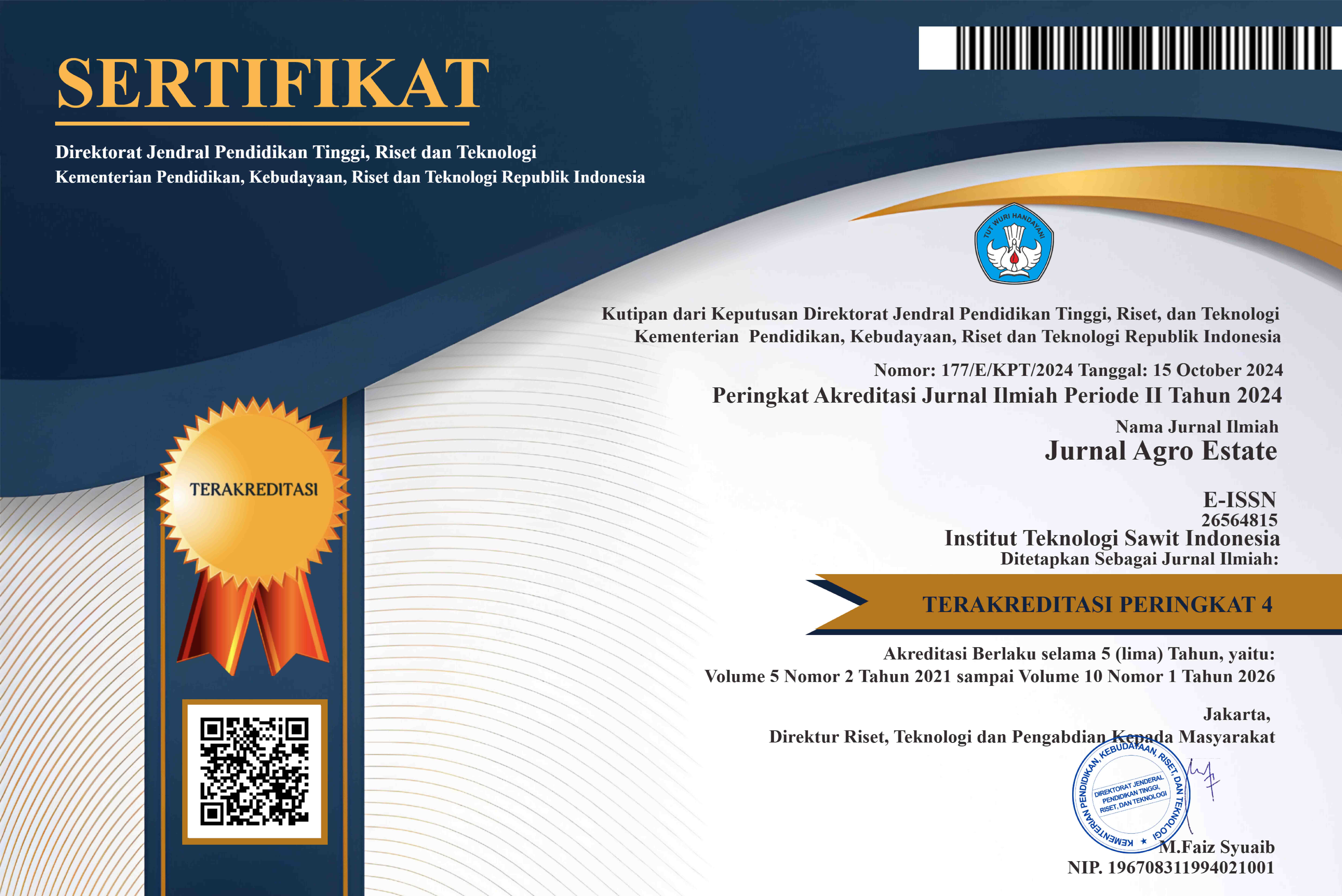STUDI EPIDEMIOLOGI DAN POLA PENYEBARAN PENYAKIT GUGUR DAUN KARET (Pestalotiopsis sp.) PADA TANAMAN KARET (Hevea brasiliensis)
DOI:
https://doi.org/10.47199/jae.v8i1.245Keywords:
Pestalotiopsis sp., symptoms, control, pattern.Abstract
Pestalotiopsis sp. is one of the important pathogens in plantation crops in Indonesia that can cause significant damage, especially in oil palm and rubber plantations. This paper aims to examine the characteristics, distribution patterns, and impact of Pestalotiopsis sp. on various plantation crops, with a focus on rubber plants. Morphologically, Pestalotiopsis sp. It has an asexual form in the form of a pycnidium and a sexual form in the form of a peritis. Symptoms of the attack are characterized by the presence of spots on the leaves that develop into blight and can lead to excessive defoliation. The research method used in this writing is a journal review. The distribution pattern of pestalotiopsis sp. in rubber plants includes spatial, vertical and temporal distribution. A deep understanding of the epidemiology and patterns of the spread of the disease is key to developing effective control strategies to minimize the impact of losses on plantation crop production.
Downloads
Downloads
Published
How to Cite
Issue
Section
License
Copyright (c) 2024 Jurnal Agro Estate

This work is licensed under a Creative Commons Attribution-ShareAlike 4.0 International License.























